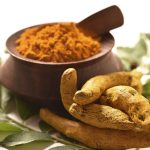Athletic performance hinges on an intricate balance of physical fitness, mental resilience, and strategic training. This comprehensive guide delves into the multifaceted approaches to enhancing your athletic capabilities, drawing from cutting-edge research and expert insights. Whether you're a seasoned athlete or a fitness enthusiast, these strategies will help you optimize your performance and achieve your goals.
Understanding the Importance of Measurable Performance
Tracking your performance is crucial to recognizing progress, identifying areas for improvement, and staying motivated. Performance-tracking apps have revolutionized the way athletes monitor their progress. These apps not only record performance data but also offer insights and tips on enhancing various aspects of your training. Using these tools, you can gather concrete evidence of your improvement, allowing for a more tailored and effective training regimen.
Physical health and wellness services now leverage technology and collaborative team approaches to ensure athletes meet their goals. These services provide regular updates on progress and offer expert advice at your fingertips, ensuring that any questions or concerns are promptly addressed. Maintaining a detailed record of your performance helps set realistic goals and achieve them precisely.
Embracing Functional Exercises
Functional exercises are essential because they mimic the natural movements of the sport or activity you are engaged in. This exercise engages multiple muscle groups simultaneously, improving overall body coordination and reducing the risk of injury. Efficient functional exercises include Olympic lifts, deadlifts, goblet squats, and split squats. These exercises engage different muscle groups, enhancing strength, flexibility, and endurance.
Functional exercises improve athletic performance by promoting better movement patterns and muscle activation when incorporated into your workout routine. Neglecting these exercises can lead to imbalances, making you more prone to injuries. Therefore, it's vital to integrate functional and isolated exercises for holistic development.
Creating an Effective Routine
Discipline and consistency are the cornerstones of any successful training regimen. To create an effective routine, you must first define your athletic goals. Once you clearly understand your objectives, research and select workouts that align with those goals. For instance, if your goal is to increase speed, consider incorporating sprint and agility exercises into your routine. Speed training exercises such as shuttle runs, and explosive sled workouts improve agility and quickness (source).
An effective routine should also include a balanced mix of strength, flexibility, and cardiovascular exercises. Strength training builds muscle and enhances power, while flexibility exercises improve range of motion and prevent injuries. Cardiovascular conditioning boosts endurance and helps you perform with greater efficiency and less effort.
Leveraging Cryotherapy and Red Light Therapy
Cryotherapy has gained popularity for accelerating muscle recovery, reducing inflammation, aiding weight loss, and enhancing overall well-being. The science behind cryotherapy indicates that exposure to frigid temperatures triggers the release of endorphins and reduces pain and swelling, promoting faster recovery. Athletes can benefit from cryotherapy sessions to manage muscle soreness and expedite healing after intense workouts.
Similarly, red light therapy has been shown to improve muscle recovery and reduce inflammation. This therapy involves exposing the skin to low levels of red or near-infrared light, penetrating the tissues, and promoting cellular repair. Regular sessions of red light therapy can significantly enhance performance by reducing downtime and enabling more frequent training sessions.
Incorporating Assisted Stretching and Manual Treatments
Assisted stretching and manual treatments are highly effective for improving flexibility, reducing soreness, and enhancing range of motion. Stretching, particularly when a professional assists, ensures that muscles are stretched correctly and safely, reducing the risk of overstretching and injury. Manual treatments such as massage therapy also alleviate muscle tension and promote relaxation, aiding faster recovery.
Regular stretching and manual treatments should be a part of your training routine, especially after intense workouts. These practices improve flexibility and enhance blood circulation, which is vital for muscle repair and growth. By maintaining a routine that includes these therapies, athletes can ensure their muscles remain supple and resilient, ready for the demands of their sport.
Optimizing Nutrition Through Understanding Resting Metabolic Rate (RMR)
Nutrition plays a pivotal role in athletic performance. Understanding your Resting Metabolic Rate (RMR) can give you an edge in optimizing your nutrition and weight loss strategies. The RMR is the calories your body needs to maintain essential physiological functions at rest. Knowing your RMR, you can tailor your diet to ensure you get the right nutrients to fuel your training and recovery.
A Resting Metabolic Rate test provides precise data on how and when your body utilizes its fuel sources, enabling you to make informed dietary choices. This data can help you increase your metabolism, enhance energy levels, and improve overall performance. Based on your RMR, proper nutrition ensures that you have the necessary energy reserves to perform at your best while aiding in efficient recovery.
Enhancing Speed and Power Through Explosive Workouts
Explosive workouts are designed to increase power, speed, and overall athletic performance. These exercises involve movements that require maximal effort in short bursts, effectively training your fast-twitch muscle fibers. Incorporating exercises like box jumps, plyometric pushups, and kettlebell swings can significantly improve power and agility (source).
Box jumps, for instance, improve lower body strength and explosiveness, which is vital for sports requiring quick, powerful movements. Plyometric pushups enhance upper body power, while kettlebell swings engage the core and lower body, promoting overall strength and coordination. These workouts should be performed with proper technique to prevent injuries and maximize benefits.
Conditioning Strategies for Specific Sports
Different sports require targeted conditioning strategies to optimize performance and prevent injuries. For instance, baseball players need to focus on flexibility and strength in the hamstrings, back, and shoulders to handle the sudden, explosive movements typical of the game. Similarly, golfers benefit from building lower back strength to stabilize their swing and prevent lower back injuries.
Tennis players should condition their oblique muscles for powerful trunk rotation, which is essential for serving and hitting the ball. On the other hand, swimming demands a muscular chest and midsection for efficient propulsion through water. The muscles controlling the front and sides of the chest often become too strong compared to the back muscles, necessitating a balance through targeted strengthening exercises (source).
The Role of Recovery in Performance Enhancement
Recovery is an often overlooked aspect of athletic training, yet it plays a crucial role in performance enhancement. Adequate rest and recovery allow muscles to repair and grow, reducing the risk of overtraining and injuries. Active recovery techniques, such as light aerobic exercises, stretching, and foam rollers, can help accelerate recovery by improving blood flow and reducing muscle stiffness.
Incorporating mindfulness and brain fitness into your recovery routine can also benefit significantly. Meditation and deep breathing exercises help reduce stress and improve mental clarity, allowing athletes to perform better under pressure. A well-rounded recovery strategy that includes physical and mental components is essential for peak athletic performance.
Summary
Optimizing athletic performance involves a holistic approach that encompasses tracking progress, incorporating functional exercises, creating effective routines, leveraging advanced therapies, and focusing on nutrition and recovery. You can significantly enhance your athletic capabilities by paying attention to these elements and tailoring your training to meet your specific goals. Whether an elite athlete or a fitness enthusiast, these strategies will help you achieve new heights in your performance journey.











